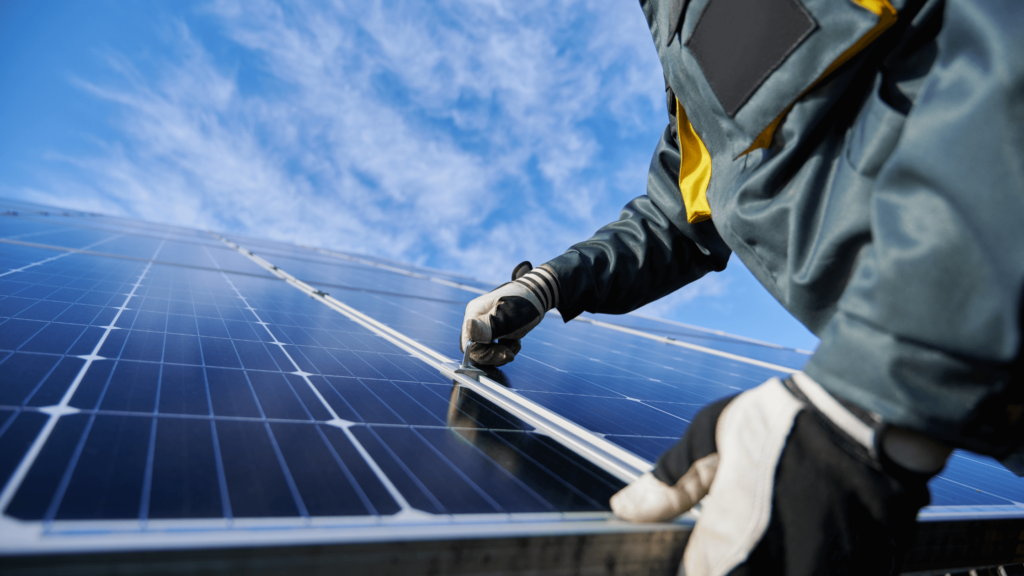Everything has an environmental impact, from the tree cut down to make each two-by-four to the distance a cement truck has to drive to the worksite each day and the total emissions a building will release into the atmosphere during its lifetime. Net-zero design takes all of this into consideration and strives to use design principles like biophilia, load reduction, and environmental awareness to achieve a net amount of zero greenhouse gas emissions—and sometimes even becoming carbon negative, too.
When designing and constructing a building, it used to be enough to consider its intended use, aesthetic considerations, regulatory requirements, and cost. Now, with a looming climate crisis, we must also consider the effect a building has on the world in which we live.
What does net zero mean?
Net zero is a term used to describe a situation in which the total amount of greenhouse gasses (GHG) released by an activity is zero or less than zero. Net zero buildings have a total GHG of zero (or less) during the entire process from start to finish, including the building’s material sourcing, construction, operation, and demolition.
Understanding net-zero concepts
Net-zero carbon construction maintains zero carbon emissions during a project’s building phase. Measurement starts with the first shovel in the ground and stops when construction is complete.
Projects with net-zero carbon in operational energy have designed buildings with zero or negative carbon emissions during regular use each year from sources like heat, lighting, and electricity. A building typically achieves net zero operational energy by using energy-efficient design, venerable energy sources, and purchasing carbon offsets as required.
Net-zero carbon, whole-life refers to a building being carbon neutral (or negative) when considering the operational energy each year and the embodied carbon from the resources required to extract, construct, and even demolish the building.
Carbon offsets refer to reducing carbon emissions in one area by investing in projects or initiatives that reduce or eliminate carbon in other areas. For example, you have participated in carbon offsetting if your project emits eight tons of carbon but invests in an initiative that effectively removes eight tons of carbon elsewhere.
The importance of net-zero construction
The construction industry is responsible for 37% of global greenhouse gas emissions. As the name suggests, these emissions create a greenhouse effect on the Earth, capturing the sun’s heat and trapping it within the atmosphere. Greenhouse gases significantly drive climate change, raising temperatures, sea levels, and climate anxiety.
If the construction industry can shift to energy-efficient builds, reusing materials, and sustainable construction methods, it can reduce emissions and help avoid or lessen the impending climate emergency.
Strategies to achieve net-zero carbon
Net-zero buildings don’t just happen; each one is carefully designed with the goal in mind, incorporating specific design strategies to achieve it.
1. Understand your environment

The more work you do to understand the environment in which you’re building, the more efficient you can be. Understanding local temperature patterns, light levels, humidity, and geography ensures you can work with the regional climate instead of against it. Optimized design uses windows and skylights to let in natural light instead of relying on electricity and installs efficient heating and cooling systems like heat pumps to take advantage of geothermal energy. This also involves selecting the most efficient, effective, and long-lasting materials for each climate.
2. Reduce the load
The best way to reduce emissions is to design with lower requirements in mind right from the start. Strategies for reducing a building’s energy load include making efficient use of space, reducing square footage, and installing good-quality windows, floors, and insulation to minimize the loss of heat and cooling (and the need to run energy-sucking HVAC units to compensate). Reducing the load also involves strategic landscaping in some climates.
3. Choose clean energy

Building with net-zero emissions in mind means incorporating clean energy use and generation into the structure whenever possible. Whether installing solar panels in the parking lot or simply setting the building up to run on geothermal energy instead of electricity, some energy sources are “cleaner” than others and emit fewer GHGs.
Surplus green energy sources can also be sold, further reducing GHG emissions by reducing other buildings’ reliance on less energy-efficient sources and providing funds to purchase carbon offsets.
4. Incorporate biophilia

Biophilia refers to the human desire to be immersed in and connect with nature. Net-zero building design doesn’t stop with the building—it also expands to the natural environment using biophilic design. Planting trees, shrubs, and ground cover used to be a nice-to-look-at finishing touch designed to add curb appeal, but landscape design can take on new weight when it’s used to mitigate energy use and drive a project towards net-zero status. Assessing the sun’s travel patterns and planting shade trees accordingly can help reduce heat in summer months. Using natural lighting and ventilation can help further connect a building’s occupants to the outdoor world while also reducing net emissions and energy requirements.
5. Choose materials wisely
Whole-life net-zero buildings consider the resources needed to extract each material involved in their construction—every beam, pane of glass, and floorboard. Using repurposed materials eliminates the GHG cost of extracting or manufacturing virgin materials while choosing long-lasting materials means replacing them less often.
With net zero buildings, everyone wins
Designing buildings with net-zero emissions in mind requires a thoughtful approach to design, construction, operations, and even demolition. Each step is interlaced not only with the other phases but also with the natural world. As one of the global leaders in emissions, the construction industry had the opportunity to make net-zero buildings standard and lead the way with a bold approach to mitigating emissions that span a project’s entire lifespan, from resource extraction to material reclamation and redistribution. With net-zero buildings, everyone wins.




5 comments